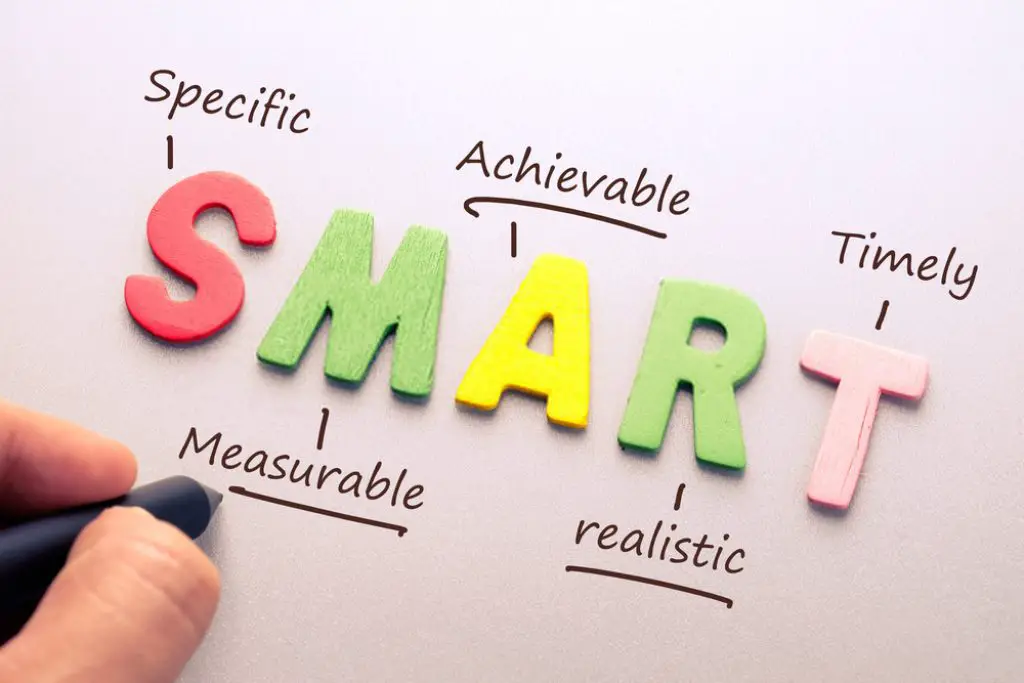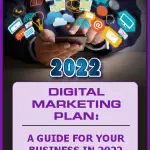

I hope you enjoy reading this blog post.
If you want my team to just do your marketing for you, click here.
As 2021 winds down and as we quickly look to 2024 with much optimism, it’s vital that you have a digital marketing plan for your business. With more and more businesses becoming aware of the inevitability of digital marketing for business growth, what plans have you put on the ground to ensure you kick off the new year with speed?
Every business without a marketing plan has already planned to fail. Marketing is a core ingredient of every successful business, big or small. Taking it online is now a must, and no more an option, as other competitors are already doing it.
I know not every business owner has the time or is savvy in drafting out a digital marketing plan. That’s why my team and I here at imarena.net have put together this simple article about an online marketing plan for you. It will help you plan your online marketing for 2024 and beyond.
If you’d like your business to grow in this new century, then you need to have an internet marketing strategy in place. Digital marketing provides the most efficient strategies to reach leads who may be interested in your business. If you do not have a digital marketing plan in place it’s time to make one!
However, putting a digital marketing strategy in motion without having previously devised a strategy or plan could result in failure in the event that you do not consider all aspects that might affect its development.
In this article, we’ll give you the steps needed to develop the digital marketing plan.

My Agency can Help You Make Money Online
Cashcow Videos - we create engaging faceless cashcow and business explainer videos that earn passive income.
Monetized Blogs - select from our list of ready-made niche blogs that are already approved for monetization.
Business or Website Traffic - using various digital marketing strategies, we drive massive amounts of targeted traffic to your website.
But first, here are some digital marketing plan statistics you should know to further convince you why you need one for 2024 and beyond :
- 98% of sales reps are achieving their quotas via Social selling.
- Google has more than 77,000 search requests every minute.
- 93% of all interactions online begin by using the use of a search engine.
- 74% of marketing professionals believe that targeted personalization improves customer engagement ( Econsultancy)
- 49% of customers believe they’d prefer to receive emails with promotional offers from their preferred brands on a regular week. (Statista )
- 45percent of companies send leads just one email each week. (Databox)
- 55% of companies that blog receive 55% more website traffic.
What Is A Digital Marketing Plan?
A digital marketing strategy outlines what you’re trying to achieve within a certain timeframe to meet the business goals. When developing an online marketing strategy, it is essential to remember that marketing is about conveying the advantages that your service or product offers in a manner that resonates with your customers.
Therefore, your strategy should concentrate on strategies for marketing that will allow your business to reach out to your audience by providing an integrated experience. One of the advantages of digital marketing is the ability to experiment with different strategies and then adapt your strategy according to the results and what’s not.
There are a variety of categories that are typically grouped under the umbrella of “digital marketing.” From research and marketing automation to tactical tasks like pay-per-click advertisements There are numerous elements to the digital marketing strategy.
An ideal Digital Marketing Plan
Digital marketing is broadly divided into the areas – paid and free. While the paid marketing strategies bring a rush of instant results, the free strategy is a long-term venture that brings in results organically.
Paid Digital Marketing Strategies

- Search Engine Marketing
- Paid Advertising
- Email Marketing
- Influencer Marketing
- Mobile Marketing
- Content Marketing (if outsourced)
Free and Organic Digital Marketing Strategies
- Search Engine Optimization
- Social Media Marketing
- Content Marketing (if done by you)
- Reputation Marketing
A well-designed online marketing plan should have a good combination of both. While you build for long-term sustenance, you also need the immediate results to keep the business afloat and ensure morale doesn’t wane.
Steps To Create A Digital Marketing Plan
1. Branding is a key element of your business.
The first step in achieving the success of your digital marketing strategy is to define your brand. It is essential to understand the specifics of your brand’s image so that you can present it to your target audience.
What is distinctive about your company? What are you bringing your customers that other companies don’t? What are your brand colors and persona? It’s crucial to determine the uniqueness of your business to be able to market it to the people who will be interested in it. All your marketing efforts should revolve around your brand image.
Make distinctive selling points (USPs) to give your customers a better understanding of your company’s identity.
These are the facts about your company that are unique to your company, and can also convince people to join your company. USPs help to improve the perception of your business and make them feel more confident choosing you over competitors.
In addition to your USPs, you’ll need to establish your brand’s mission and its values. Find out the reasons you’re in the business you are in. What is the reason your business decides to get up and running each day and serve your customers?
If you’re looking to achieve success with your online marketing business plan, begin by defining your brand’s identity and determining what differentiates your company.
2. Create buyer personas
It’s impossible to create a successful digital marketing strategy without knowing the people you’re trying to reach. The next stage of your digital marketing plan is to develop buyer personas to determine your audience. If you had one, evaluate it and make changes where necessary. That’s how a good online marketing agency does it.
The buyer persona represents fictional characters who portray the traits of the individuals you’re trying to attract to purchase the products and services you offer. They represent your ideal customer and are the ones who will most likely purchase from your company.
To create your buyer persona, collect information like:
- Location
- Age
- Income
- Job title
- Hobbies
- Goals
These are fantastic bits of information that can assist you in creating your buyer persona.
Buyer personas will help you decide whom to target when managing your campaign. Most of the time you’ll have multiple buyer personas that you’re targeting. Making these personas can help you reach various types of buyers according to their interests and preferences.
Imagine a store for clothing that sells clothes for women, men, and kids. For that alone, you’ll have a distinct buyer persona for both women, and parents.
The approach you use to market to single women is different from how you market to a married couple with three children. Buyer personas can help you keep these distinct people within your target audience apart so that you can give them the most appropriate and pertinent marketing information.
The creation of buyer personas can aid you in creating a more effective digital marketing plan since you’ll be able to target the right people in your target market.
3. Set SMART goals

Before you begin your journey to reach your intended audience, you must define your objectives. It’s crucial to establish objectives so that you can assess whether your marketing plan is effective and helping your company develop.
When setting goals, you should set small and huge goals. Small goals will help to keep you focused on reaching your goals.
Let’s say your main ambition is to increase conversions by 40%. One small way to help you reach that goal could be to acquire 10 more email users. This small goal can help to achieve your larger target.
When you establish goals, it’s essential that you establish measurable goals. They are also referred to as goals that are SMART.
The acronym SMART means:
- Specific
- Measurable
- Attainable
- Relevant
- Current
It is important to establish goals that outline the goals you’d like to reach.
They must be easy to track also. Do not declare, “We want to earn more subscribers,” however instead, “We want to gain 50 new email subscribers each quarter.” The second goal is more specific and is easy to measure in a time frame.
If you set goals that are SMART, you’ll get your digital marketing plan on the right track to success.
4. Choose your digital marketing methods
If you’re looking to learn how to develop a successful digital marketing plan, select the best digital marketing strategies. You’ve identified the audience you want to reach and the goals you’re trying to accomplish and the second step would be to decide which channels can help you get them to notice you.
There are different ways that your business can leverage to get these prospects:
- SEO or Search Engine Optimization (SEO)
- “Pay-per-click” (PPC) advertisement
- Content marketing
- Email marketing
- Social media marketing
- Influencer Marketing
These are only some of the channels you could utilize to reach out to your customers. As you begin to develop your digital marketing plan you need to decide on the methods you’d like to utilize to reach out to your customers.
5. Set your budget

The budget you set is an essential element of your marketing campaign. It is important to know the amount you are able to invest in your digital marketing campaign prior to applying your strategies. Setting a budget for your marketing lets you better allocate your funds to the services you require.
If you have your budget, you are able to break it down into parts and assign the funds to various channels. It is important to determine a compromise between the amount you’re willing to spend on each channel, and the amount you’ll need to put into it to get the best outcomes.
As an example, you could consider that $500 is enough for the PPC advertising campaign although it may yield some results, it may likely not produce the same outcome as someone who puts $1000 into a PPC campaign, every other thing being equal.
Once you know what is in your budget and also how much you’ll need to invest for each of the channels, you can make a better business plan for digital marketing.
Have it as a rule of thumb that for every $1 spent on digital marketing, expect to get a return of $42.
6. Measure results
A digital marketing plan must include a method to monitor outcomes. The ability to measure results is essential to determine if your business is achieving its marketing goals. It’s crucial to keep track of your performance to ensure that you’re running the most effective marketing campaigns.
You can make use of the key performance indicators (KPIs) to determine the effectiveness of your campaign. KPIs are a set of statistics that can aid in determining whether you have met your goals or not.
If you’re not achieving your objectives, it gives you an opportunity to redesign your strategies to achieve greater outcomes. You can modify and improve your strategies in order to improve your reach to consumers.
Components of a Digital Marketing Plan
Digital Advertising
Advertising on the internet includes bidding and purchasing relevant ads on third websites, like banner ads on forums, blogs as well as other relevant websites. The types of ads are images as well as pop-ups, text banners, videos, and banners. Retargeting is a crucial aspect of online marketing.
Retargeting is a process that involves adding an anonymized browser cookie that allows you to monitor the new users who visit your website. As the visitor visits other websites you can show them your ads on those sites to further promote your product or service. Such advertising efforts are primarily focused on people who had expressed interest in your business.
Content Marketing
Content marketing is an essential component of a digital marketing plan aimed at attracting prospective customers. The regular posting of relevant and high-quality online content will aid in establishing an image of thought leadership. It can inform potential clients about the challenges that your product could assist them with and improve search engine rankings. You become an authority in their view.
Content could be blog posts whitepapers, case studies as well as other content that offer the audience you want to reach. These digital content assets could be utilized to gain customers via organic or paid efforts.
Email marketing
Email is an efficient method of marketing that involves sending out promotional messages to a targeted audience of customers or prospects. Marketing via email is an effective way to send specific messages that are targeted to the interests and needs of customers. It is particularly popular with businesses that sell online as a means to remain at the top of the minds of customers.
Search engine optimization

Search Engine Optimization is a vital component of a digital marketing plan as it concentrates on increasing the organic traffic that your site receives. SEO involves innovative and technical strategies to increase your business rankings and visibility in search engine result pages. The most frequently used search engines are Google, Bing, and Yahoo. These are where prospective customers start their search for solutions.
Digital marketing managers are focused on maximizing levers that include keywords, backlinks, and original content to ensure that they remain on top of the search results.
Social Media Marketing
The use of social media in marketing is an essential aspect of digital marketing. Platforms like Facebook, Twitter, Pinterest, Instagram, Tumblr, LinkedIn as well as YouTube offer digital marketing professionals opportunities to pay for and engage with prospective customers.
Digital marketing campaigns typically include organic efforts, paid content, and promotions on the most popular social media platforms to reach a greater number of people and increase brand awareness. Social marketing activities is a part of digital marketing plan you can’t neglect.
Mobile marketing
Mobile marketing refers to the promotion of services or products specifically through mobile phones and other devices. This includes mobile ads via text messages or advertisements on downloaded apps. But a complete mobile marketing strategy involves optimizing email landing pages and content to ensure a great experience for mobile users.
Search Engine Marketing
Search Engine Marketing (SEM) can increase the visibility of businesses on search engines and their partner websites by permitting allowing to bid on specific keywords and to purchase advertising space within the results of search engines.
Advertisements are only displayed to those who are actively looking for the terms you’ve chosen. There are two primary kinds of Search Engine Marketing that are available: pay-per-click (PPC) or cost per million (CPM).
With PPC you only pay for each time someone clicks your advertisement. With CPM you pay according to the number of times your ads are shown. Google Adwords is the most frequently used paid search advertising platform. However, other search engines such as Bing also offer paid programs. Incorporating Search Engine Marketing into your digital marketing plan will go a long way in getting immediate results for your business.
Reputation marketing

Reputation marketing is about gathering and encouraging good online reviews. Reviews on the internet can affect customers’ buying decisions and is a crucial component of your overall brand’s reputation.
A reputation marketing strategy online will encourage customers to leave positive reviews on websites where prospective buyers search for reviews. Many review sites offer native ads that allow businesses to place advertisements on competitors’ profiles.
Video Marketing
Video marketing lets companies engage with customers in a more stimulating and engaging way. You can show off the launch of new products, events, and announcements that are special, and also provide informational content and stories.
YouTube along with Vimeo are among the most frequently utilized platforms to share and promote videos. Pre-roll advertisements (which are displayed in the first 5-10 seconds before the video) are another method by which marketers using digital media can connect with audiences using video platforms.
Webinars
Webinars are events held online that let companies interact with customers who are both existing and potential regardless of where they are in the world. Webinars can be a great method of presenting relevant information — for example, a product demonstration or a lecture to an audience that is targeted in real-time.
Engaging with your audience directly by using webinars allows your business to showcase your deep subject knowledge. A lot of companies use attendance lists from other marketing initiatives (email and retargeting ads) to create leads and build on existing relationships.
Actionable Digital Marketing Plan For Businesses
Step 1: Strategizing and ConsultingThe leader of the marketing or the outsourced marketing team has to constantly review reports and analytics, prepare strategies, and regularly meet with key stakeholders to share information and ensure that the project is going forward. |
Step 2: Consistent Update Of Website Blog (1 each month)Your business should consistently update your website blog section at least once per month. You can do this by posting a new blog or updating the old ones. An in-house writer can do this or it can be outsourced. |
Step 3: Lead Generating (Create one landing page each month)Potential customers want to be educated during the selling process. The company should plan to create eBooks, webinars, documents, or other content that can be downloaded. It can also host interactive programs to provide answers to common questions of prospects. The aim is to launch one lead generation campaign every month. |
Step 4: Blogging (at least 1 per week)Blogging is a vital part of a digital marketing plan as blog posts can drive traffic to your website and also improve SEO. It also helps your brand to build trust and authority in the minds of your customers. The company should publish a unique, well-optimized informational or industry news item at least once a week. |
Step 5: Email Marketing (at least 1 per week)Communicating regularly with your clients and prospects is vital for creating relationships. It’s what they say: out of sight is out of mind! Weekly emails to targeted lists can aid marketers and sales in nurturing lead prospects. It will also keep clients involved discover new opportunities and close deals more quickly. |
Step 6: Social Media (15 mins+ per day)Engaging on social networks will help your business increase its reach and web visits. Your business social plan should include daily posts on social media to highlight various marketing campaigns, as well as important curated content. You should also have a strategy to identify and engage with potential leads and customers. |
Step 7: Paid AdvertisingYour business should have a digital marketing plan to use paid advertising to promote high-quality content to a target audience. This will help your business to quickly get new customers and boost website traffic. You can run ads once, twice or as many as you want to depend on your strategy and budget. |
Step 8: Sales AlignmentSales alignment is vital to achieving an effective return on investment. The sales team should align with the marketing team. This is to create a plan that will assist sellers in the creation of sales templates and scripts that are aligned with marketing strategies including lead scoring. |
Step 9: Search Engine OptimizationSEO optimization should be the main focus for every business that wants to create a digital marketing plan. On-page, off-page, and technical SEO and link building are all in the strategy to ensure that the business has the best chance to rank well for their targeted keywords and words. |
Step 10: Co-MarketingOne of the most efficient ways to reach new customers and turn them into leads is to collaborate with companies that aren’t directly competing with you but have the same market. The time will be devoted to discovering influencers, establishing connections with them, and establishing synergistic co-marketing strategies. |
| The Total Hours Per Month Invested is 140 |
In conclusion
Maintaining a digital presence for your business should be taken seriously by all businesses. This is because it is usually the first point of contact for people who are seeking your services or product aside from your physical stores. If you don’t have physical stores this is the only location where people can find you. That’s why it’s important to create a web presence that’s accessible as well as informative, helpful, and user-friendly.
With a lot of digital marketing strategies online, it can be confusing which ones will benefit your business the most. This is why you need to take a look at your past digital marketing activities and identify what works best for your business. You can also follow our digital marketing plan to create a sustainable digital presence.





